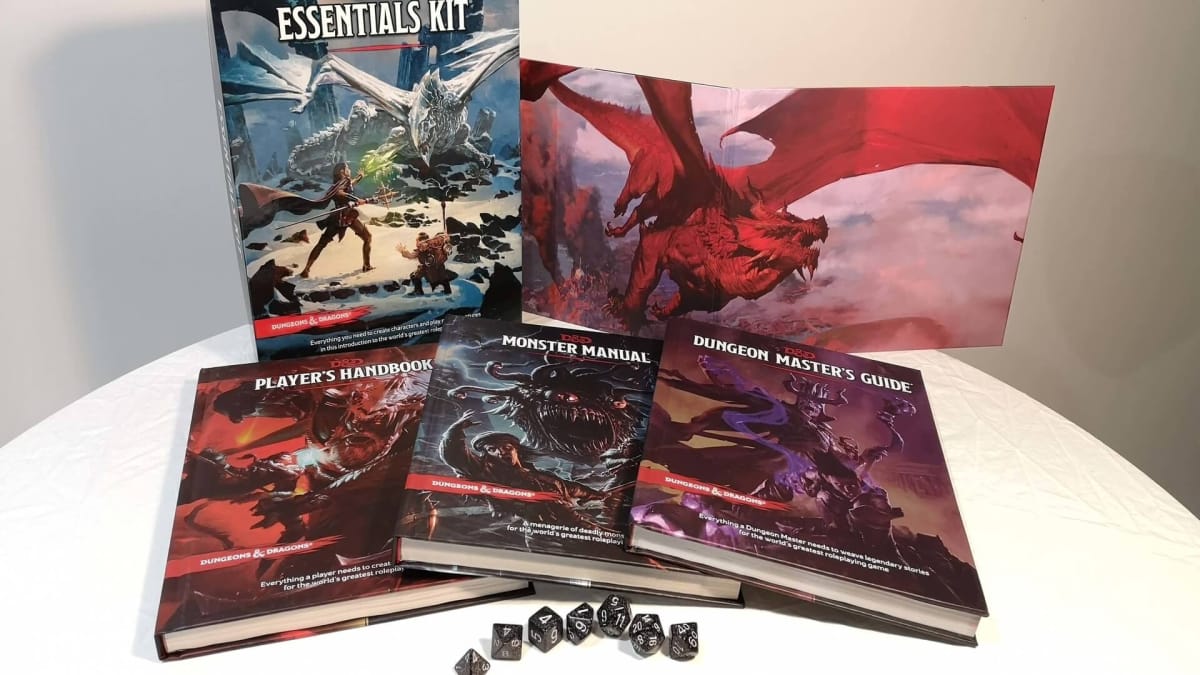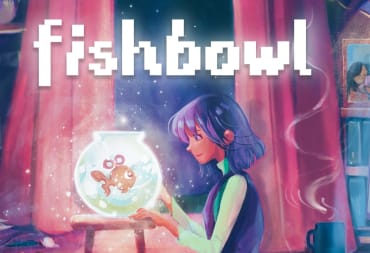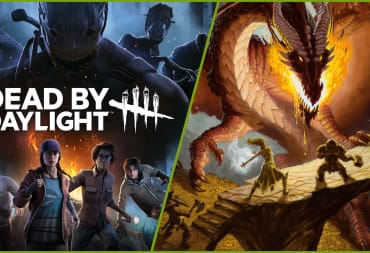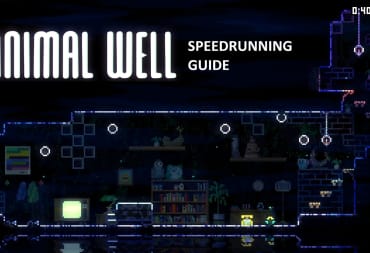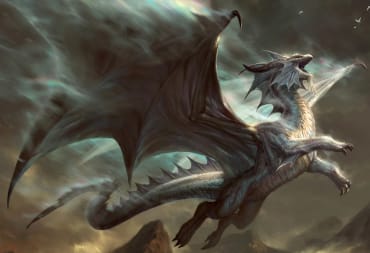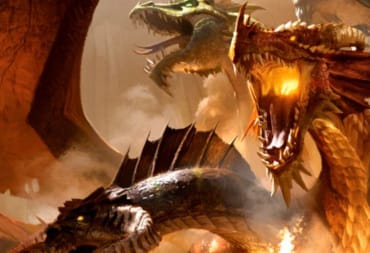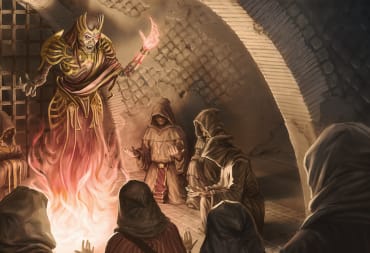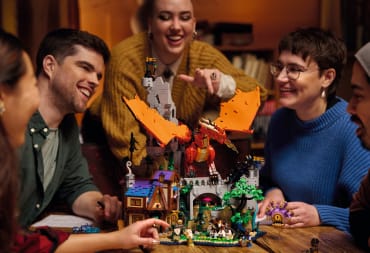Dungeons and Dragons is experiencing a revitalized bout of popularity lately, mostly thanks to appearing in endless pop-cultural touchstones like Stranger Things. If you've often looked at DnD in amazement but have felt overwhelmed by the somewhat impenetrable nature of the game, then you're in luck. This is our Dungeons and Dragons guide to turn any complete novice into a dice-totting expert in no time flat.
If you enjoy this guide and want to learn more, consider checking out our Dungeons and Dragons game page for more of our articles on the game.
Dungeons and Dragons Guide
As you step through a huge arch you feel the air rippling with heat. The sense of threat, dread and violence fires your senses. Something huge moves within the shadows of the arches. Its so big the air throbs with its presence. You step down a few stairs onto a floor that begins to give as soon as your foot touches it, causing you to look. Treasure slides away from the disturbance of you feet and you notice that the whole floor is covered with coins, chalices, bowls, statues and more of pure gold. A gust of cinder hot wind that burns in your throat and nostrils makes you look up. A dragon emerges from the shadows, smooth and lithe. It fills the space between the arches and then stretches out to fill most of the space in front of them as well. It draws its head back and you see a flame ignite in the back of its mouth.
What do you do?
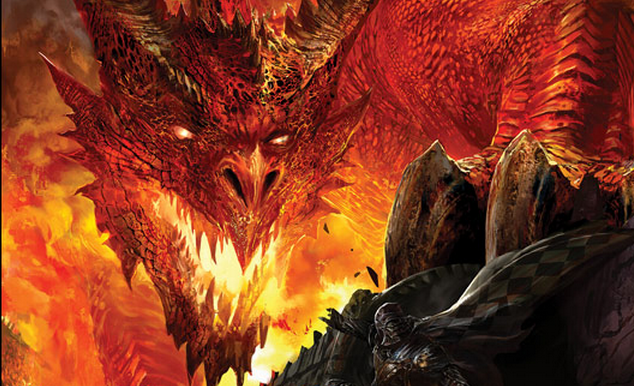
Dungeons and Dragons
Dungeons and Dragons is a tabletop roleplaying game where players take on the role of characters and play through fantasy adventures and scenarios.
Dungeons and Dragons was first published under that name in 1974 and has been through several editions and revisions and had multiple spins off in other media genres.
What is a roleplaying game?
A roleplaying game, or RPG, is a game where using a rules structure, players interact with a world invented and run by another player, known as the Dungeon Master (DM) or Games Master (GM). Players create their own characters and play as a group through adventures either using theatre of the mind, or visual references like hand-drawn or published maps and miniatures.
RPGs are generally played with dice, which are rolled to determine success or failure for tasks and actions.
RPGs can be thought of as collaborative storytelling.

Brief history
Dungeons and Dragons was first published in 1974 as 3 booklets as part of a limited hand-assembled print run. Over the next 15 years, it expanded its product line and gained momentum in its sales until Advanced Dungeons and Dragons second edition was released in 1989. Dungeons and Dragons gains further momentum as more settings are added to the narrative, and the franchise branched out into other media streams.
In 2000 the third edition of Dungeons and Dragons is released, followed by a revised edition, known as 3.5, in 2003. Fourth edition Dungeons and Dragons was released in 2007 and then in 2014, marking its 40-year anniversary, the current edition, the fifth edition is released.
Overview of a couple of core mechanics
The core mechanic of Dungeons and Dragons requires players to roll a 20-sided dice (D20), the result of which is then added to an attribute and/or skill bonus. The result has to beat a target number set by the DM.
For example, your character wishes to climb over a wall, so you would add the result of your dice roll to your climb skill and strength attribute bonuses. The DM may say that the wall is covered in wet moss, making it difficult to climb, so you may need to score over 20 to succeed, or you may have a rope with you, making it easier to climb, reducing your target number to 15.
An example in play would be:
The party of adventurers are in pursuit of a thief who stole an amulet they were protecting, they chase around a corner and come across a wall. Salarn the elf, slightly faster than the other characters reaches it first. The wall is covered in moss, making it difficult to climb, so they need to score 15 or higher on the test. Salarn is very good at climbing, but not very strong. They have +5 from their climb skill and +1 for their strength attribute. Salarn rolls a 9, which means with their +6 they just make it. There are a few slips and scrapes on the moss, but Salarn scrambles up and over the wall just as the other adventurers reach the bottom of it.
Essentials to play
To play Dungeons and Dragons, you need:
- Players
- Dice
- Rulebooks
Players
Usually, a minimum of 3 players are required for a game, 1 of which will take on the role of the Dungeon Master. Games can have as many players as the DM can manage, but as gaming sessions only have a limited amount of time, having huge groups can restrict the time each player has, so groups usually have between 3 and 6 players.

Dice
A set of dice includes a selection of different sided dice. A standard set includes:
- One twenty-sided dice (D20)
- Two ten-sided dice (2 D10)
- One twelve-sided dice (D12)
- One eight-sided dice (D8)
- One six-sided dice (D6)
- One four-sided dice (D4)
The 2 D10 can be used to get a score between 1 and 100, with 1 D10 used for the 10’s and the other the units. Depending on the character you play, you may like to have more of specific dice, such as D6s and D4s for Rogue’s who can roll several low dice for damage. Players also like to have 2 different colored D20s, as some tests require you to roll 2 and pick the highest or lowest, depending on if you have advantage or disadvantage.
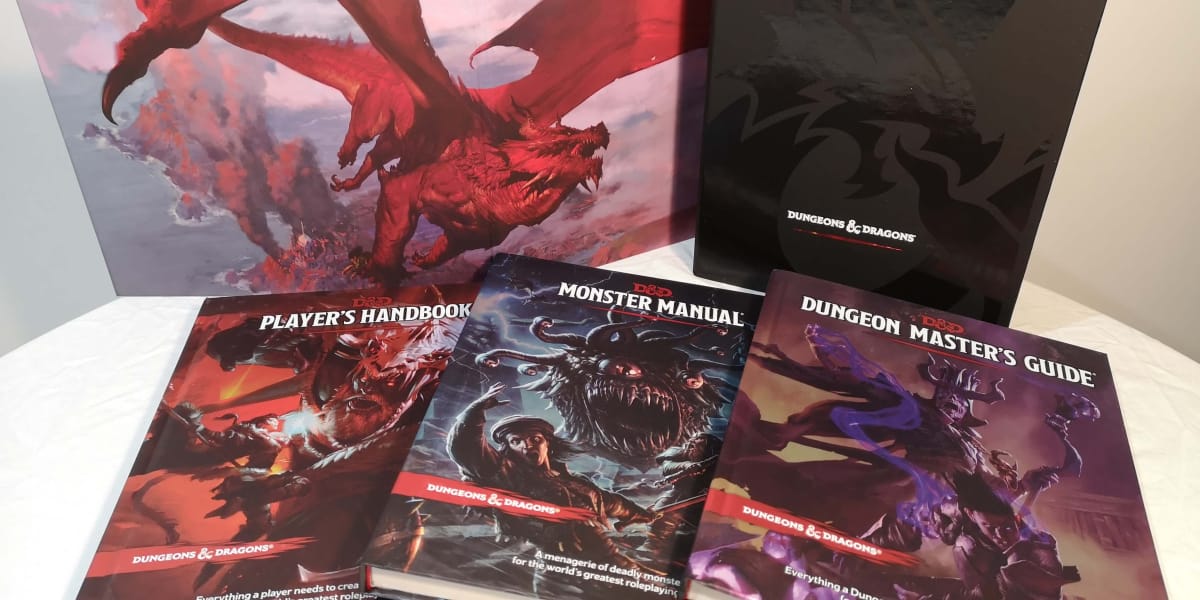
Rulebooks
Player’s Guide
The player’s guide includes all the details players need to play games of Dungeons and Dragons. It starts with a brief introduction to Dungeons and Dragons and roleplaying games, then moves into a very user-friendly step by step guide to creating characters. Options for player characters include 9 races, including humans, elves, dragonborn and gnome and 12 classes including fighter, wizard, monk and ranger. The book then helps you flesh out your character with background and personality details, equipment and then customization options.
The second part of the book goes into rule details and explains how to make tests, and how combat works, as well as other in-game mechanics like time and the environment. The final part of the book is a comprehensive look at spells and how to cast them, as well as a large section on the spells that are available for magic users.
Dungeon Master’s Guide
While games can be run with the characters and rules presented in the Player's Guide, a huge part of Dungeons and Dragons is the work done by the Dungeon Master. The create the world and adventures that the players go on, and this book does everything it can to make a DM's life easier.
The Dungeon Master's Guide gives advice and guidance on creating worlds, as well as specific adventures and linking them together in a campaign. It gives you all the tools you need to create the stats for those that live in the world, the creatures and villains and civilians that the players will meet and interact with. It also details everything you need rules-wise for running combat and keeping track of everything you need to while the players explore and battle through your creations.
Optional but extremely useful extras
Monster Manual
The Dungeons and Dragons 5th Edition Monster Manual contains just over 300 pages of whole page details on specific monsters and creatures you can use in your games. It also includes 25 pages of quick details for smaller creatures and animals and 10 pages of details for generic characters that the players might meet.
While no essential for play, it is an incredible reference for DM’s to use in games, either in planning or for the quick production of enemies when working on the fly.
DM’s Screen
Dungeon Masters generally have a lot of notes and maps that they want to keep secret from the players until they reach that part of the story, and some DMs like to roll their dice secretly in order to keep the players in suspense about their actions. This can be done with some boxes, or an open file or DMs can get a hold of a Dungeon Master's Screen, which usually has some incredible artwork on the player-facing side, and handy charts and reference material on the DM facing side.
You can, of course, make your own screen easily enough, but the official Dungeons and Dragons screen is well designed and sturdy enough to last many years of campaigns.
D&D Core Rules Gift Set
You can pick up all of the above in the Core Books Collection, which contains the Player’s Guide, Dungeon Masters Guide, Monster Manual, and GM’s screen is a storage box that holds them all neatly.
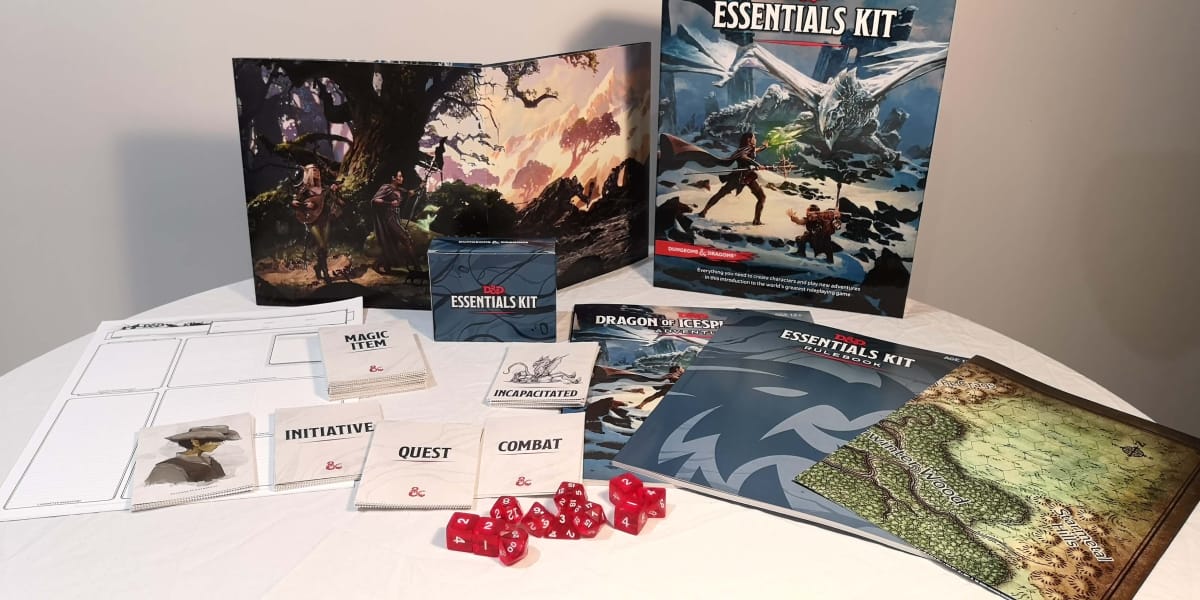
D&D Essentials Kit
The D&D Essentials Kit is a one-stop starter set to try out and get into Dungeons and Dragons. It contains dice, a small DM’s screen, a streamlined rulebook, which includes character creation for 4 races and 5 classes, a beginners adventure that takes characters from 1st to 6th level and loads of extras to help the adventure along, including maps and cards with magic items and quests.
It’s an incredible product for getting players into D&D and for beginner DMs. It also guidance and a sidekick system for playing games with a DM and a single player.
You can read our full review of the D&D Essentials Kit here.
Supplementary Products
Dungeons and Dragons has a lot of material out there, and here are just some key highlights of products you can look at once you’ve played a few games with the system.
Baldur’s Gate: Descent into Avernus - This is an adventure that takes players from Level 1 to 13, set in the iconic city of Baldur’s Gate.
Waterdeep Dragon Heist & Waterdeep Dungeon of the Mad Mage - Are two linked adventures that can take players from Level 1 to 20. As well as being an adventure, the books are incredible introductions to D&D and can really help set the scene if you’re setting your games of D&D in the continent of Faerun.
Xanathar’s Guide to Everything - The sourcebook contains a wealth of information and options for players, including new spells, sub-classes, and feats.
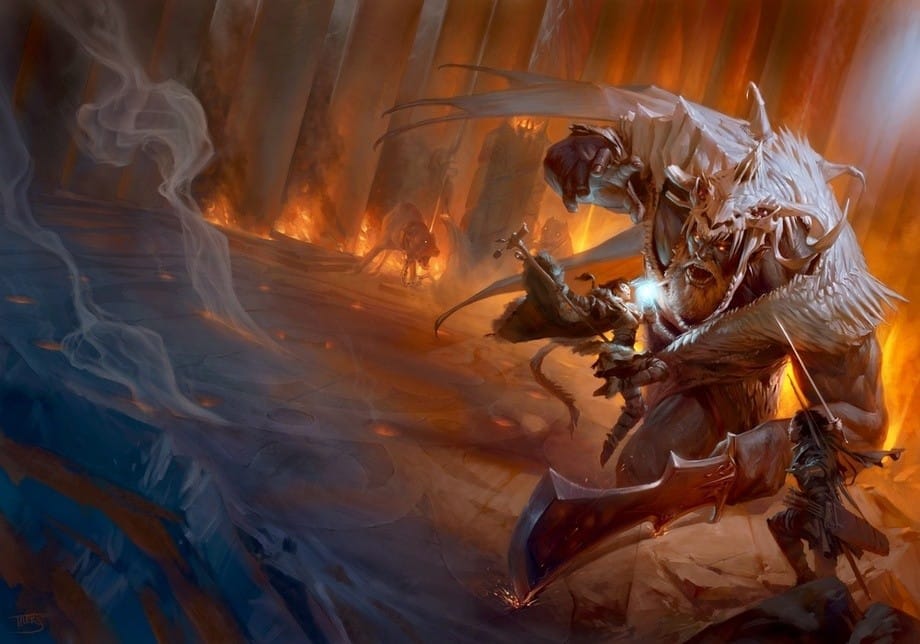
Why be the DM
A lot of players fall into the role of the DM because they’re the one who buys the game and reads the rules, or they want to play a particular game and organizing and running it is the easiest way to get players into a game. Or maybe they’ve seen certain well known DM’s streaming games and it has inspired them to run their own. However someone has come to DM, they normally continue because it’s a unique chance to be a narrator and story-teller, world-builder, rules moderator and actor all in one.
The DM’s purpose is the help the players create an exciting and interesting story, by giving them the tools and options to do so.
It’s not for everyone, but we would urge everyone to give it a go.

Player Options
Players have several options when creating a character, starting with race and ending with feats and equipment. But one of the defining characteristics of a player’s character is the class they take up as it defines their role in the party and the way their character levels up. Below is a brief introduction to each of the 12 main classes from the Player’s Guide. Other classes are introduced in other supplements and can also be created by players themselves if the DM allows it.
Barbarian - Fierce warriors who have rage options, able to ignore damage and deal large amounts back.
Bard - Musical artists who channel magic through its creation.
Cleric - Priests with faith abilities and spells.
Druid - Nature-based characters with plant and animal abilities.
Fighter - Flexible fighters. Their creation options allow you to build the kind of fighter you want.
Monk - Expert martial artists who can perform incredible feats.
Paladin - Holy warriors who blend martial abilities with some faith abilities and spells.
Ranger - A mix of fighter and druid, a warrior of nature.
Rogue - Stealth-based, cunning, and dexterous, thieves and assassins.
Sorcerer - A natural spellcaster, calls the power from within.
Warlock - Granted powers through pacts or by higher powers.
Wizard - Have been taught magic or learned through books, a more scholarly magic-user.
Who is the game for?
Dungeons and Dragons is really for everyone. It’s about creating stories with a group of friends. The essential thing to get right is to make sure everyone is comfortable in the group and also comfortable enough to let others know when they are not comfortable.
Joining an established group of players can be daunting, but if a group is advertising for other players to join their group, it usually means they’re welcoming, especially to beginners.
If you don’t want to join an established group, then you can look to set up your own group for new players and learn together. If you’re taking on the role of the DM in a brand new group, then focus on the story and the experience for your players.
The copies of the Dungeons and Dragons products used to produce this article we provided by Wizards of the Coast.
Have a tip, or want to point out something we missed? Leave a Comment or e-mail us at tips@techraptor.net
